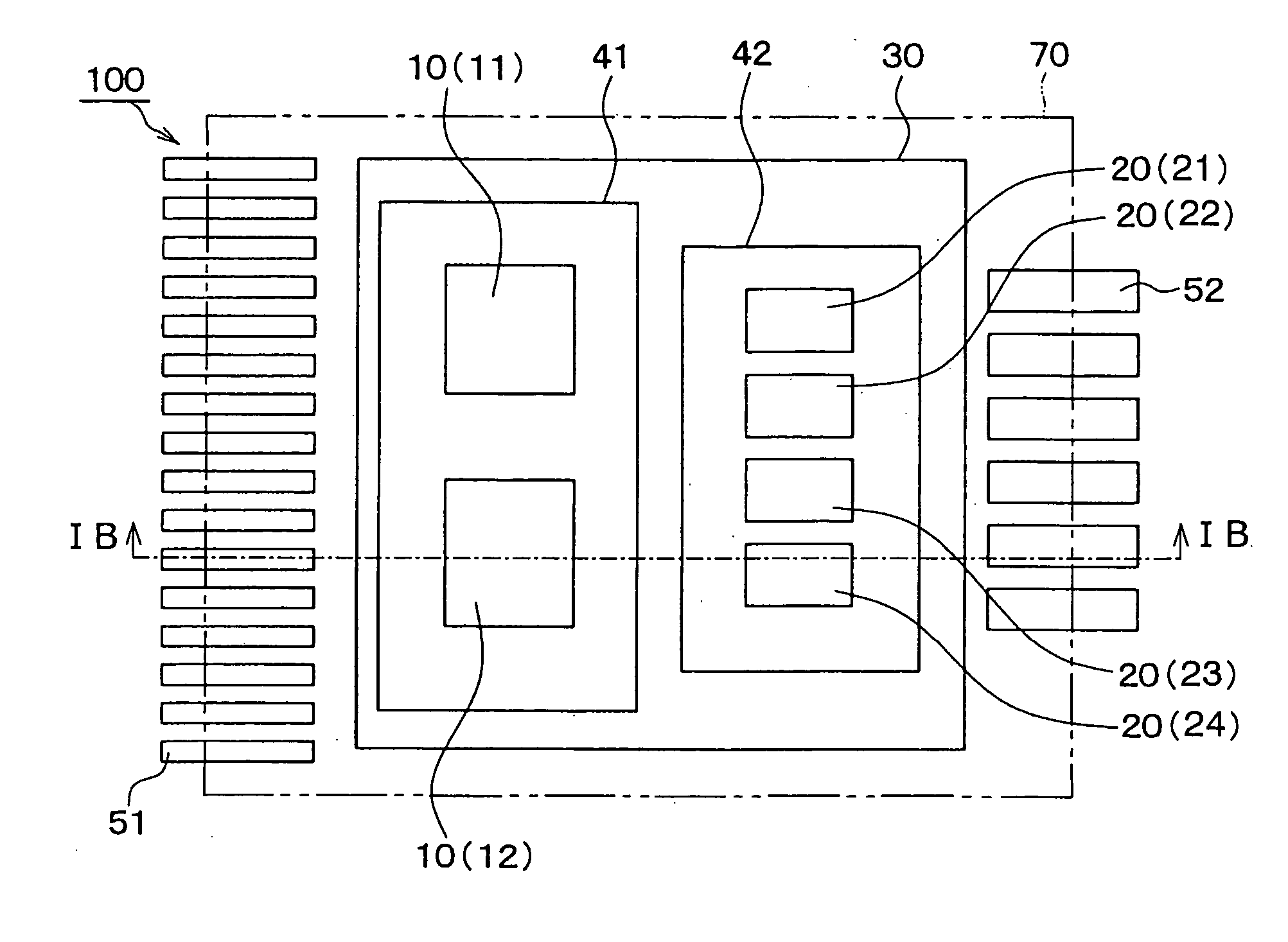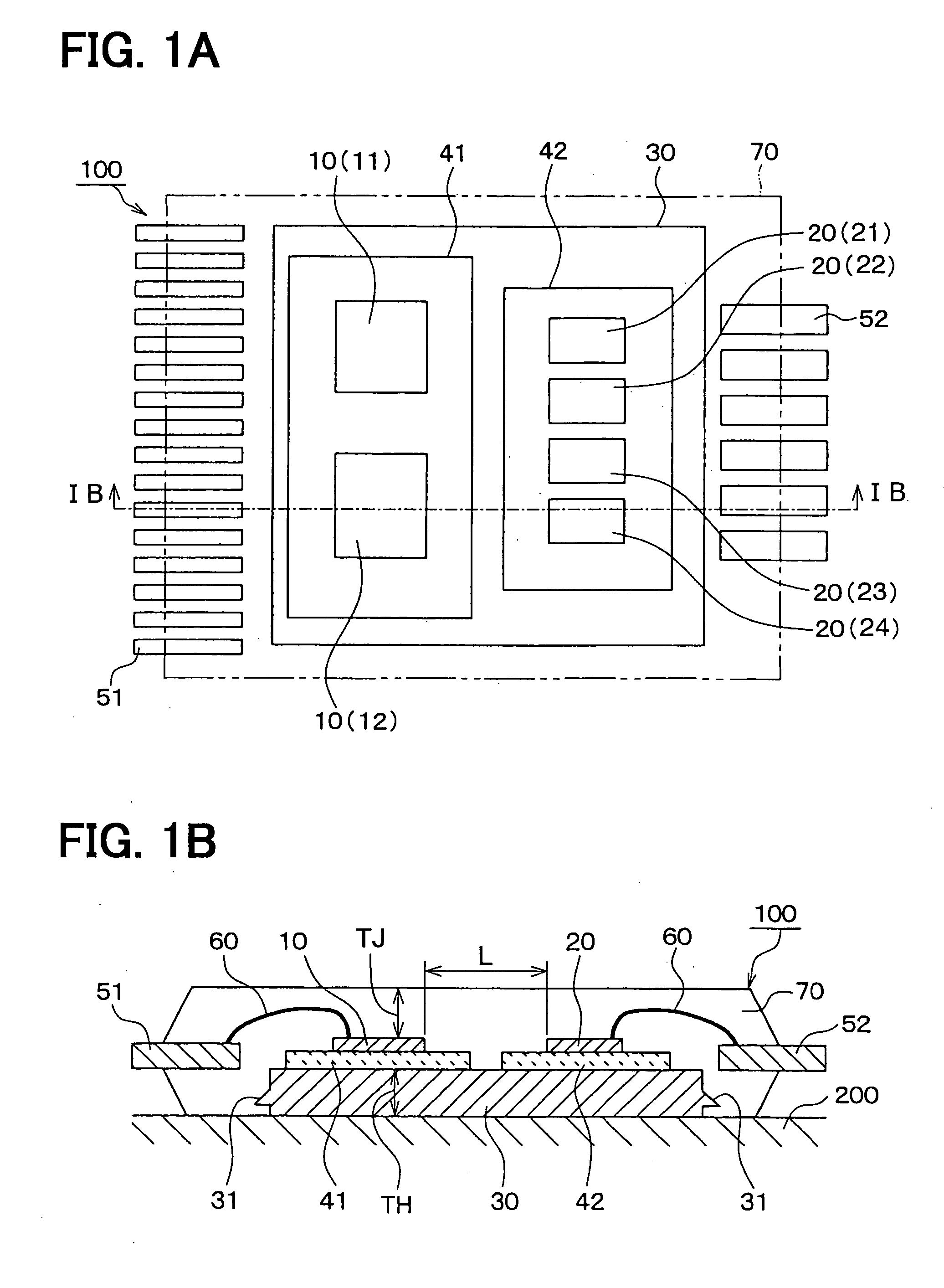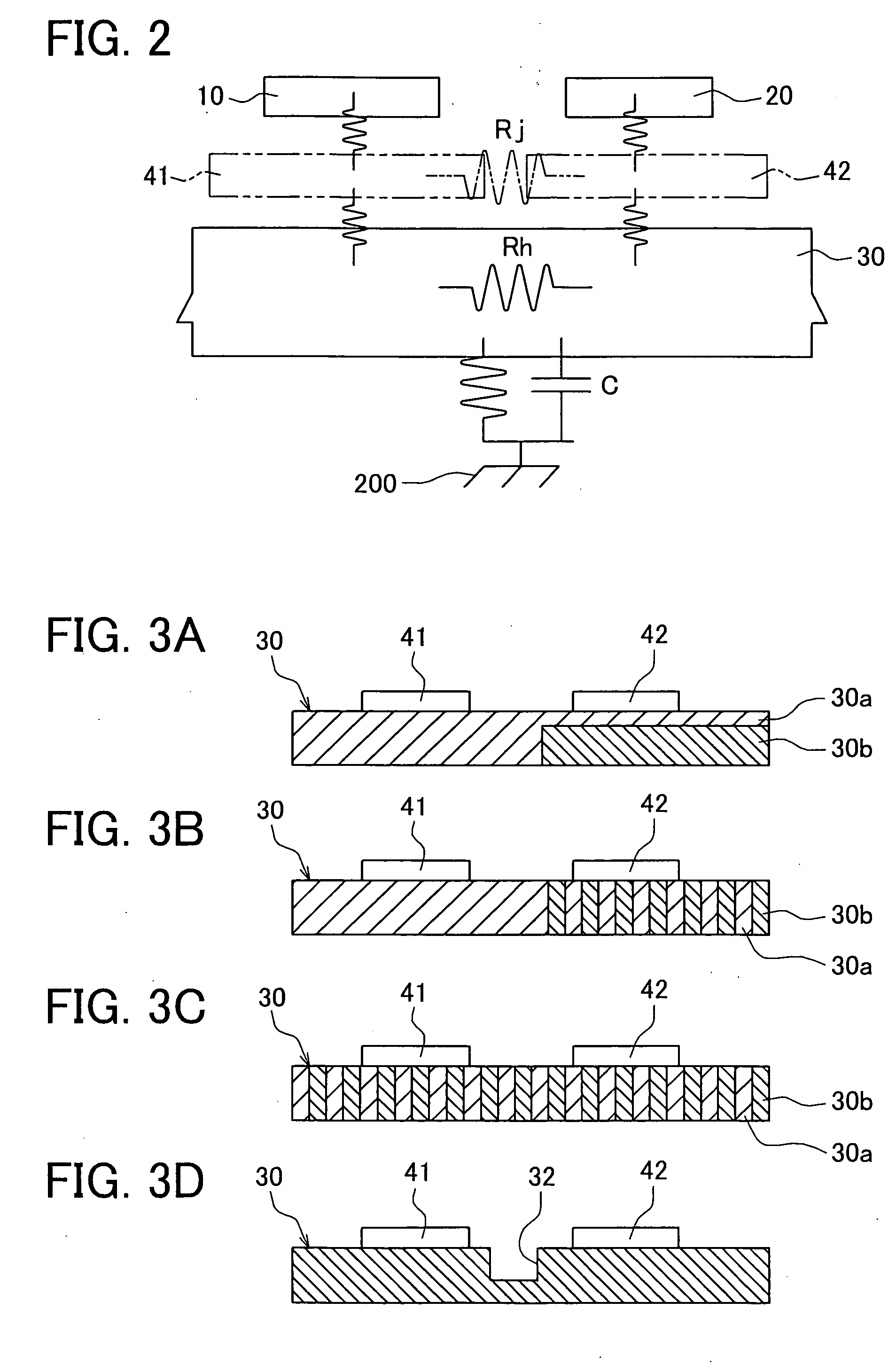Semiconductor device and method for manufacturing the same
a technology of semiconductor devices and semiconductors, applied in the direction of electromagnets with armatures, non-metallic protective coating applications, electrical apparatus construction details, etc., can solve the problems of limited operating temperature of control elements, increased size, and lower operating temperature, and achieves the effect of not increasing the manufacturing cost of devices, small size, and easy mounting in actuators
- Summary
- Abstract
- Description
- Claims
- Application Information
AI Technical Summary
Benefits of technology
Problems solved by technology
Method used
Image
Examples
first embodiment
[0114] A first embodiment of the present invention relates to a semiconductor device provided with a first electronic element such as control element and a second electronic element such as power element that has larger current passed therethrough as compared with the first electronic element to generate large heat and is used for driving an actuator, for example, a motor.
[0115] The inventors have investigated that a problem to be described in the following arose in the case of a semiconductor device according to a related art.
[0116]FIG. 5 is a circuit block diagram to show the typical circuit construction of a semiconductor device as a HIC for driving the driving motor of power window of an automobile. Specifically, FIG. 5 is the circuit block diagram to show a common circuit construction of the semiconductor device as a HIC for driving a driving motor of a power window of an automobile and having a JAM function.
[0117] In FIG. 5, a control element 10 as the first electronic elem...
second embodiment
[0276]FIGS. 12A and 12B are illustrations to show the schematic construction of the semiconductor device 200 provided with the first electronic element 10 and the second electronic element 20 in accordance with a second embodiment of the present invention and FIG. 12A is a plan view and FIG. 12B is a sectional view along a line XIIB-XIIB in FIG. 12A.
[0277] Further, FIG. 13A is a schematic sectional views of a temperature sensing diode 90 formed in the control IC 12 in the semiconductor device 200 shown in FIGS. 12A and 12B, and FIG. 13B is a schematic sectional view of a temperature sensing diode 90 formed in the power MOS elements 21, 24 in the semiconductor device 200 shown in FIGS. 12A and 12B.
[0278] Also in this embodiment, there is provided a semiconductor device provided with the control element 10 and the power element 20 controlled by the control element 10 and characterized in that: the device is provided with the heat sink 30, the first wiring board 41 and the second wir...
third embodiment
[0339] A third embodiment of the present invention relates to an electronic device made by mounting a heating element and a temperature-limited element on a heat sink and then by molding them in such a manner as to wrap them by a molding resin.
[0340]FIG. 19 is an illustration to show a schematic plan construction of an electronic device 300 provided with a heating element 20 as the second electronic element and a temperature-limited element 10 as the first electronic element in accordance with a third embodiment of the present invention.
[0341] Further, FIG. 20 is an illustration to show a schematic sectional construction of the electronic device 300 shown in FIG. 19. Here, in FIG. 19, bonding wires 60 are omitted and in FIG. 20, some of bonding wires are omitted.
[0342] In this embodiment, descriptions will be provided on the assumption that the electronic device 300 is applied to a HIC (hybrid IC, hybrid integrated circuit) for driving the driving motor of power window of an auto...
PUM
| Property | Measurement | Unit |
|---|---|---|
| thickness | aaaaa | aaaaa |
| diameter | aaaaa | aaaaa |
| diameter | aaaaa | aaaaa |
Abstract
Description
Claims
Application Information
 Login to View More
Login to View More - R&D
- Intellectual Property
- Life Sciences
- Materials
- Tech Scout
- Unparalleled Data Quality
- Higher Quality Content
- 60% Fewer Hallucinations
Browse by: Latest US Patents, China's latest patents, Technical Efficacy Thesaurus, Application Domain, Technology Topic, Popular Technical Reports.
© 2025 PatSnap. All rights reserved.Legal|Privacy policy|Modern Slavery Act Transparency Statement|Sitemap|About US| Contact US: help@patsnap.com



